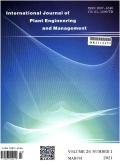European Utility Requirements for Advanced LWR Issue of EUR Revision E and Ongoing Assessments
International Journal of Plant Engineering and Management
Pub Date : 2018-07-22
DOI:10.1115/ICONE26-82343
引用次数: 1
Abstract
The purpose of the European Utility Requirements (EUR) Organisation is to actively develop and promote harmonised requirements for new mid- and large-size LWR NPPs that are proposed for construction in Europe. The harmonisation which is sought by the fourteen member utilities of the EUR Organisation, aims at delivering the safest and most competitive designs based on common requirements shared across Europe. The harmonised requirements are presented in the EUR document. This consists of an extensive set of requirements covering all aspects (safety, performance, competitiveness) and all parts of a NPP (Nuclear and Conventional Islands). It can be used by Utilities (e.g. for assessment of the GEN3 designs proposed by vendors, technical reference for call for bids) and by Vendors (e.g. understanding of customer’s expectation of GEN3 NPPs, facilitating the licensing process). The presentation will describe the main outcomes of the last 3 years of EUR Organisation activities (roadmap 2016–2018) and the challenges for the coming near future, in the following three fields. First, completion of Revision E of the EUR Document was achieved in December 2016 and issued in July 2017, followed in October 2017 by a training course that was attended by 90 participants. The presentation will describe the most significant updates including revision of the safety requirements to align to the most recent European and International safety standards issued by WENRA and IAEA, lessons learned from the Fukushima accident, including re-evaluated Seismic and External Natural Hazards approach and updated international standards (e.g. for I&C and for European Grid code). Revision E also includes feedback from previous design assessments of NPPs. Future possible development of the EUR Document (and of the assessment process) will be considered within the EUR Organisation ‘Roadmap’. Assessment of new designs is the second main technical activity. The assessment of the KHNP EU-APR (European version of APR1400) was completed in 2017 and an assessment of the Russian AEP’s VVER-TOI is planned to complete in 2018. These assessments are against EUR Revision D. The first assessment against Revision E (of the CGN HPR1000 “Hualong” design) is planned between 2018 and 2020. The presentation will recall the EUR design assessment objectives and process and the outcomes and progress of the different assessments. The third topic is the interaction between the EUR and other stakeholders, in particular other international organisations (ENISS, WNA/CORDEL, WENRA, EC, IAEA, EPRI/URD) with the aim of promoting Industry Requirements and influencing prospective regulation where appropriate. The presentation will describe how the EUR Organisation is connected to these stakeholders and how it presents Utility requirements to the wider nuclear industry.欧洲公用事业公司对先进低水堆的要求发布了欧洲修订E版和正在进行的评估
欧洲公用事业要求(EUR)组织的目的是积极制定和促进拟议在欧洲建设的新的中型和大型轻水堆核电站的统一要求。欧盟组织的14个成员公用事业公司寻求协调,旨在根据欧洲共享的共同要求提供最安全,最具竞争力的设计。统一的要求在EUR文件中提出。这包括一套广泛的要求,涵盖了核电厂(核与常规岛屿)的所有方面(安全、性能、竞争力)和所有部分。它可以被公用事业公司使用(例如,评估供应商提出的GEN3设计,为招标提供技术参考),也可以被供应商使用(例如,了解客户对GEN3核电站的期望,促进许可程序)。演讲将描述过去三年欧元组织活动的主要成果(路线图2016-2018)以及即将到来的挑战,在以下三个领域。首先,2016年12月完成了欧元文件的修订E,并于2017年7月发布,随后在2017年10月进行了有90名参与者参加的培训课程。报告将介绍最重要的更新,包括修订安全要求以符合WENRA和国际原子能机构发布的最新欧洲和国际安全标准,从福岛事故中吸取的教训,包括重新评估地震和外部自然灾害方法以及更新的国际标准(例如I&C和欧洲网格规范)。修订E还包括来自先前核电站设计评估的反馈。EUR文件(和评估过程)的未来可能发展将在EUR组织“路线图”中考虑。对新设计的评估是第二个主要的技术活动。KHNP EU-APR (APR1400的欧洲版本)的评估于2017年完成,俄罗斯AEP的VVER-TOI评估计划于2018年完成。针对修订E(中广核HPR1000“华龙”设计)的第一次评估计划在2018年至2020年之间进行。演讲将回顾EUR设计评估的目标和过程,以及不同评估的结果和进展。第三个主题是欧元与其他利益相关者之间的互动,特别是其他国际组织(ENISS, WNA/CORDEL, WENRA, EC, IAEA, EPRI/URD),目的是促进行业需求并在适当的情况下影响未来的监管。该报告将描述欧盟组织如何与这些利益相关者建立联系,以及它如何向更广泛的核工业提出公用事业要求。
本文章由计算机程序翻译,如有差异,请以英文原文为准。
求助全文
约1分钟内获得全文
求助全文

 求助内容:
求助内容: 应助结果提醒方式:
应助结果提醒方式:


